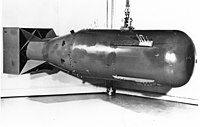
Human Mesenchymal Stem Cell Failure to Adapt to Glucose Shortage and Rapidly Use Intracellular Energy Reserves Through Glycolysis Explains Poor Cell Survival After Implantation
Sign Up to like & getrecommendations! Published in 2018 at "STEM CELLS"
DOI: 10.1002/stem.2763
Abstract: Mesenchymal stem cells (MSCs) hold considerable promise in tissue engineering (TE). However, their poor survival when exogenously administered limits their therapeutic potential. Previous studies from our group demonstrated that lack of glucose (glc) (but not… read more here.
Keywords: cell; energy; glc; energy reserves ... See more keywords

The winter munchies: feeding throughout winter is common in juvenile Pumpkinseed and improves energy reserves available in spring
Sign Up to like & getrecommendations! Published in 2020 at "Environmental Biology of Fishes"
DOI: 10.1007/s10641-020-00992-7
Abstract: In warmwater fishes, feeding during winter is often assumed to be negligible; however, there is growing evidence that juveniles will feed opportunistically even at cold temperatures. If fishes are able to effectively digest prey, then… read more here.
Keywords: juvenile pumpkinseed; winter; energy reserves; common juvenile ... See more keywords

The role of energy reserves in common carp performance inferred from phenotypic and genetic parameters
Sign Up to like & getrecommendations! Published in 2021 at "Aquaculture"
DOI: 10.1016/j.aquaculture.2021.736799
Abstract: Abstract In temperate zones, energy reserves of fish are closely related to survival during the first winter of their life. In this study, the genetic and phenotypic background of the accumulation, mobilization and utilization of… read more here.
Keywords: performance; energy reserves; common carp; energy ... See more keywords

Do energy reserves and cold hardiness limit winter survival of Culex pipiens?
Sign Up to like & getrecommendations! Published in 2021 at "Comparative biochemistry and physiology. Part A, Molecular & integrative physiology"
DOI: 10.1016/j.cbpa.2021.110912
Abstract: The risks of depletion of energy reserves and encountering lethally low temperatures are considered as two important mortality factors that may limit winter survival of mosquito, Culex pipiens f. pipiens populations. Here we show that… read more here.
Keywords: winter; winter survival; physiology; limit winter ... See more keywords

Seasonal and large-scale spatial variability of the energy reserves and the feeding selectivity of Meganyctiphanes norvegica and Thysanoessa inermis in a Subarctic environment
Sign Up to like & getrecommendations! Published in 2019 at "Progress in Oceanography"
DOI: 10.1016/j.pocean.2019.102203
Abstract: Abstract Krill, as forage species, play a pivotal role in marine food webs by linking lower to upper trophic levels. Despite their ecological relevance, processes affecting their physiological condition and their feeding selectivity remain not… read more here.
Keywords: meganyctiphanes norvegica; norvegica thysanoessa; energy; thysanoessa inermis ... See more keywords

Identification of supraoptimal temperatures in juvenile blueback herring (Alosa aestivalis) using survival, growth rate and scaled energy reserves
Sign Up to like & getrecommendations! Published in 2022 at "Conservation Physiology"
DOI: 10.1093/conphys/coac022
Abstract: We measured anadromous juvenile blueback herring survival, growth rate and energy reserves across temperatures 21–33°C when fed a constant ration. Growth was more sensitive to warm temperatures than energy reserves. Survival remained high, yet smaller… read more here.
Keywords: juvenile blueback; survival growth; growth; energy reserves ... See more keywords

Effects of Adult Feeding and Overwintering Conditions on Energy Reserves and Flight Performance of Emerald Ash Borer (Coleoptera: Buprestidae)
Sign Up to like & getrecommendations! Published in 2018 at "Environmental Entomology"
DOI: 10.1093/ee/nvy040
Abstract: Abstract Emerald ash borer, Agrilus planipennis Fairmaire (Coleoptera: Buprestidae), an invasive beetle from Asia, spreads through human-mediated movement and active flight. The effects of adult feeding and overwintering conditions on A. planipennis energy reserves (e.g.,… read more here.
Keywords: feeding overwintering; adult feeding; flight; effects adult ... See more keywords

Effects of Energy Reserves and Diet on Glassy-Winged Sharpshooter Egg Maturation
Sign Up to like & getrecommendations! Published in 2017 at "Journal of Economic Entomology"
DOI: 10.1093/jee/tox314
Abstract: Abstract The glassy-winged sharpshooter is an invasive insect capable of transmitting the plant pathogen Xylella fastidiosa. As rates of pathogen spread are a function of vector abundance, identification of factors contributing to glassy-winged sharpshooter egg… read more here.
Keywords: winged sharpshooter; energy; glassy winged; sharpshooter egg ... See more keywords

Testosterone and Corticosterone Profiles and Body Condition of Calling and Non-calling Lithobates grylio
Sign Up to like & getrecommendations! Published in 2019 at "Copeia"
DOI: 10.1643/cp-18-134
Abstract: Anuran vocalization is one of the most energetically expensive behaviors recorded in vertebrates. To sustain this behavior, circulating hormones in male frogs must act to promote calling behavior while mobilizing energy reserves. We hypothesize that… read more here.
Keywords: calling non; cort; lithobates grylio; testosterone corticosterone ... See more keywords